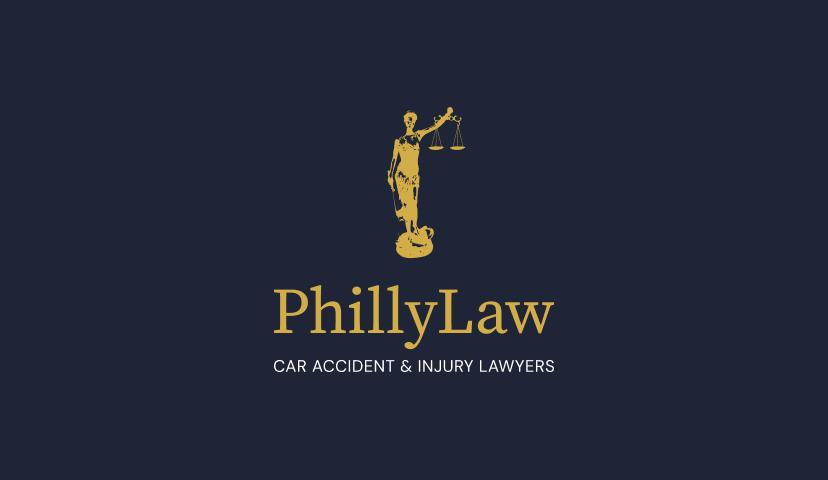Table of Contents
The Elements of a Medical Malpractice Claim
What is Considered Medical Malpractice Under Pennsylvania Law?
Medical malpractice occurs when a healthcare provider deviates from the recognized “standard of care” in the treatment of a patient. The “standard of care” is defined as what a reasonably prudent medical provider would or would not have done under the same or similar circumstances. Essentially, it boils down to whether the provider was negligent. A claim of medical malpractice—a legal cause of action—arises when a patient is harmed by a medical professional (or a healthcare institution) who fails to competently perform their medical duties.
Four Elements of Medical Malpractice
To establish a valid medical malpractice case, four critical elements of medical malpractice must be proven under Pennsylvania law.
Professional Duty of Care
The plaintiff first must demonstrate that the healthcare provider owed them a duty of care. This element is typically established through the existence of a doctor-patient relationship.
Breach of Duty
Next, it must be shown that the healthcare provider breached this duty by not adhering to the accepted standard of medical care. This means that the care provided was not in line with what a competent healthcare professional would or would not have done under similar circumstances.
Causation
The breach of duty must be directly linked to the patient’s harm. This requires showing that the healthcare provider’s actions or lack thereof were a substantial factor in causing the injury or worsened condition.
Damages
Finally, the plaintiff must prove that they suffered actual harm as a result of the breach. This harm can manifest as physical injury, financial loss, emotional distress, or a combination of these.
Successfully proving these elements of medical malpractice can be complex and often requires the testimony of medical experts to establish what the accepted standards of care are and how they were violated.
How to Prove Medical Malpractice
Proving a medical malpractice claim necessitates a comprehensive understanding of both the legal and medical fields, making it imperative for the plaintiff to seek the expertise of legal and medical professionals. The process typically involves the following steps:
Gathering Comprehensive Documentation
This includes all medical records related to the treatment in question, such as doctor’s notes, test results, and billing information. These documents serve as critical evidence in establishing what care was provided.
Securing Expert Witness Testimony
An essential component of a medical malpractice case is the testimony of an expert witness. This is usually a healthcare professional who practices in the same specialty as the defendant. The expert witness will provide insights into the accepted standard of care for the condition or procedure and how the defendant’s actions deviated from this standard.
Establishing the Standard of Care
The standard of care refers to the degree and type of attention a competent healthcare professional, with a similar background and in a similar community, would have provided under the same circumstances. This benchmark is crucial for determining whether a breach of duty occurred.
Linking Negligence to Injury
It must be explicitly shown that the healthcare provider’s neglect directly resulted in the patient’s harm. This often requires a detailed explanation of how the breach of duty led to the specific injuries or health deterioration experienced by the plaintiff.
Quantifying the Damages
Finally, the plaintiff must illustrate the breadth of the damages incurred due to the malpractice. This may encompass medical expenses for corrective treatments, lost wages, pain and suffering, and other measurable losses.
Navigating a medical malpractice lawsuit can be daunting, but by methodically addressing these areas and proving these elements of medical malpractice, a plaintiff can effectively argue their case and seek justice for the wrongdoing experienced. An experienced medical malpractice lawyer at PhillyLaw will be able to guide you through these complicated legal waters and help you seek recovery.
Types of Damages Recoverable in a Medical Malpractice Claim
In a medical malpractice claim, the types of damages available to the plaintiff can be broadly categorized into three main types:
Economic Damages
Economic damages are quantifiable financial losses that the plaintiff has incurred or will incur as a direct result of the malpractice. This can include past and future medical expenses related to the injury, lost earnings if the plaintiff is unable to work, and costs associated with long-term care or rehabilitation.
Non-Economic Damages
Non-economic damages are intended to compensate for losses that are more difficult to quantify. These can include pain and suffering, mental anguish, loss of enjoyment of life, disfigurement, and the loss of consortium or companionship.
Punitive Damages
Although less common, punitive damages may be awarded in cases where the defendant’s conduct is found to be especially harmful or egregious. Rather than compensating the plaintiff for their losses, punitive damages are designed to punish the defendant and deter similar conduct in the future.
It’s important to note that some states have caps on the amount of non-economic and punitive damages that can be awarded in medical malpractice cases.
How a Medical Malpractice Attorney at PhillyLaw Can Help You
When faced with the complex realm of a medical malpractice case, the assistance of a qualified medical malpractice lawyer at PhillyLaw is invaluable. Our legal professionals bring a wealth of knowledge and experience, essential for navigating the intricate interplay between law and medicine. An attorney specializing in medical malpractice can offer pivotal support in several ways:
- Evaluating Your Case: A seasoned attorney can provide a preliminary assessment of your situation to determine if your case meets the criteria for medical malpractice, helping to save time and resources on unwinnable claims.
- Investigation and Evidence Gathering: They possess the skills to conduct a comprehensive investigation, gathering all necessary documents, medical records, and other evidence. Their meticulous approach ensures that no critical detail is overlooked.
- Expert Connections: Given their specialization, these attorneys have access to a network of medical experts who can serve as credible witnesses, providing the specialized testimony crucial for proving your claim.
- Understanding of Legal and Medical Jargon: The complexity of medical language and legal terminologies can be a hindrance to those not well-versed in these fields. An attorney fluent in both medical and legal languages can translate these complexities into understandable terms, ensuring clear communication.
- Navigating Legal Procedures: The legal process involving medical malpractice claims is fraught with strict deadlines and procedural nuances. An experienced attorney ensures adherence to all legal requirements, avoiding potentially damaging missteps.
- Negotiating Settlements: Most medical malpractice cases are settled out of court. Having a knowledgeable attorney can lead to a more favorable settlement, reflecting the true extent of your damages and losses.
- Representing You in Court: If a settlement cannot be reached, an attorney will represent you in court, advocating on your behalf with a compelling argument built on evidence and expert testimony.
In essence, a medical malpractice attorney acts as your guide, advocate, and strategist throughout the complex process of a medical malpractice claim. By leveraging their expertise, you enhance your chance of a successful outcome, ensuring that justice is served for the injury you have endured.
Common Injuries Caused by Medical Malpractice
Medical malpractice can lead to a wide range of injuries, varying in severity from temporary discomfort to permanent disability or even death. Understanding the common injuries associated with medical negligence is essential for patients to recognize potential malpractice and to seek appropriate legal action. Some of these injuries include:
- Surgical Errors: This encompasses a broad category of mistakes, such as operating on the wrong body part, leaving surgical instruments inside the patient, or performing the incorrect procedure. These errors can lead to infection, severe pain, and sometimes the need for additional surgeries.
- Birth Injuries: Mistakes made during childbirth can have devastating effects on the baby and the mother. Common birth injuries include fractured bones, cerebral palsy, and brain injuries due to oxygen deprivation. For mothers, complications can involve excessive bleeding, infections, and injuries from episiotomies or surgical procedures.
- Misdiagnosis or Delayed Diagnosis: Failing to diagnose a medical condition or delays in diagnosis correctly can lead to a lack of necessary treatment, resulting in the progression of an otherwise manageable illness to a serious or irreversible condition.
- Medication Errors: This can involve prescribing the wrong medication, the incorrect dosage, or a drug that interacts negatively with another medication the patient takes. The consequences can range from minor adverse reactions to life-threatening conditions or death.
- Anesthesia Errors: Anesthesiologists must carefully calculate the anesthesia required based on a patient’s health and surgical procedure. Overdosing or underdosing can lead to severe pain, brain damage, or cardiovascular issues.
- Infections Acquired in Hospitals: When healthcare facilities fail to maintain proper sanitation and hygiene, patients may develop infections such as MRSA (methicillin-resistant Staphylococcus aureus) or sepsis. These infections can be particularly dangerous and sometimes fatal.
- Failure to Treat: When a healthcare provider correctly diagnoses a patient but fails to recommend or administer the appropriate treatment, or the treatment is delayed, the patient’s condition may worsen unnecessarily.
These injuries can significantly impact the patient’s quality of life and financial stability, highlighting the critical importance of addressing medical negligence. Victims of such errors are encouraged to consult with legal professionals to explore their options for compensation and justice.
Who Can Be Sued for Medical Malpractice
Determining the parties liable in a medical malpractice case can be complex, as a variety of individuals or entities may be involved in the delivery of the healthcare that led to the injury. Generally, any healthcare provider who failed to meet the required standard of care, resulting in harm to a patient, can be held accountable. This includes but is not limited to:
- Physicians and Surgeons: These are often the primary subjects of medical malpractice lawsuits. Any negligence or error made by doctors, whether in diagnosis, treatment, surgery, or patient monitoring, can be grounds for legal action.
- Nurses and Nurse Practitioners: Nursing staff play a crucial role in patient care, and their actions are equally subject to scrutiny. Mistakes in medication administration, patient care, or in communicating with doctors can lead to malpractice claims.
- Hospitals and Healthcare Facilities: The institutions themselves can be sued for medical malpractice for systemic failures, such as inadequate training, understaffing, or poor maintenance of equipment that leads to patient harm.
- Pharmacists and Pharmacies: Errors in dispensing medication, such as providing the wrong drug, dosage, or incorrect instructions, can have serious implications on a patient’s health.
- Anesthesiologists: Given the precise nature of anesthesia administration, any error in dosing or monitoring can result in significant patient injury, making these specialists liable for malpractice.
- Specialist Practitioners: Specialists, including obstetricians, radiologists, and oncologists, can also face malpractice lawsuits for errors specific to their field of expertise.
- Medical Laboratory Technicians: Incorrect processing of lab results can lead to misdiagnosis or delayed diagnosis, for which the technicians and the laboratories they work for may be held responsible.
In essence, any healthcare professional or entity that contributes to patient care and fails to provide the appropriate standard of care, resulting in harm to the patient, can potentially be sued for medical malpractice. It’s essential for victims to work with experienced legal professionals to accurately identify all parties whose negligence may have contributed to their injury, ensuring that accountability is appropriately allocated and justice is pursued.
The Medical Malpractice Lawyers at PhillyLaw are Here if You Have Been Injured as a Result of Medical Negligence
At PhillyLaw, we understand the emotional, physical, and financial toll that a medical malpractice incident can bring to your life. Our dedicated team of attorneys specializes in medical malpractice cases, and we’re committed to fighting for the justice and compensation you deserve.
Choosing PhillyLaw means partnering with a team that genuinely cares about your well-being and is dedicated to securing the best possible outcome for your medical malpractice claim. If you or a loved one has suffered due to medical negligence, do not hesitate to reach out to us for a free consultation from our knowledgeable medical malpractice lawyers. Together, we can fight for the justice and compensation you deserve.







